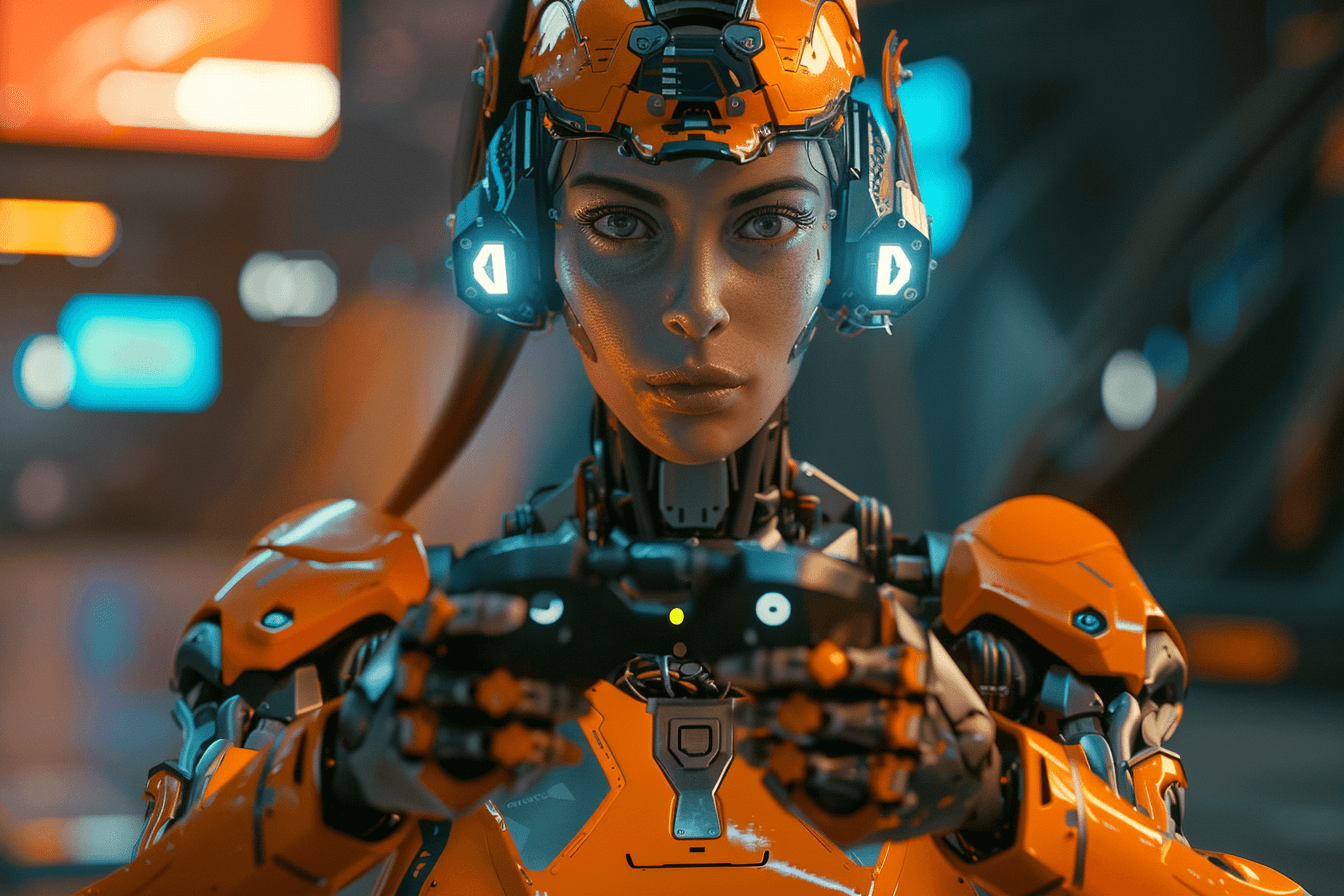Although the term artificial intelligence is breaking new popularity records today, the concept of AI itself is nothing new. This especially applies to the computer games industry, which has been in contact with artificial intelligence since its inception. It's different when it comes to generative artificial intelligence. Is generative AI in gaming an opportunity or a threat to the Web2 and Web3 gaming industry?
What is generative artificial intelligence?
Generative artificial intelligence is a field of artificial intelligence focusing on creating systems capable of creating new authentic data. This includes images, texts, sounds, or other content that appears to be man-made. It is worth noting that the real boom in generative artificial intelligence began with the premiere of ChatuGPT from OpenAI, i.e. in November 2022. ChatGPT quickly showed that it is able to create content that can be used, for example, as scripts, storyboard ideas, or scenario drafts.
Another tool that changed the work of artists was the development of Midjourney, a graphics generator. Its subsequent versions made quantum leaps, which was confirmed by the increasingly better graphics quality. Today, Midjourney is able to create photorealistic images that can also be processed inside Midjourney if, for example, an element does not fit the pre-defined concept.
Generative AI in gaming – how can it be used?
If you now think that such tools can be easily used in game production, then game creators thought exactly the same. Generative AI in gaming can do a lot. A lot. Support in coming up with scenarios for quests, art design, interface appearance – these are just some of the tasks that generative AI can successfully perform in gaming.
There is also more and more talk about video generators, such as the upcoming Sora from OpenAI. It is also worth noting that projects are also being developed that are strictly aimed at the electronic entertainment industry. One of them is, for example, the Genie project from Google. It allows you to create a simple 2D platformer only based on text or images entered into the generator. Although this project is only in the initial stage of development, the dynamics of the generative AI industry shows that creating simple platformers from prompts that look really good is a matter of a dozen or so months at most.
NEO NPC – a new dimension of immersion or chasing a trend?
It turns out that generative AI in gaming will appear earlier than most players expected. Ubisoft, one of the industry giants, announced that together with Nvidia they are working on a system that will revolutionize gaming and give games a completely new level of immersion. Although it sounds like the typical excessive boasting of monopolists, which we have heard many times in the industry, NEO NPC can actually be a revolution.
This is a system that makes NPCs, i.e. non-player characters, controlled by generative artificial intelligence. What does it mean? Well, such an NPC will not have scripted answers and behaviors, because they will be constantly adapted to the player's reactions and questions. Although it sounds far too optimistic, Ubisoft presented the system in action. It's actually impressive and can take gaming immersion to a new level.
Palworld is a benchmark of the generative usability of AI in gaming
Game developers quickly realized that generative artificial intelligence in gaming is primarily about accelerating the production process. Thanks to generative AI, it is possible to develop art design or design characters in a much shorter time than in the case of traditional approaches to game creation.
One of the greatest successes of this trend is the Palworld game, a production very much inspired by Pokemon. The head of the Japanese studio Craftopia himself admitted that he is a big fan of generative artificial intelligence. Palworld turned out to be a hit, with 25,000,000 players playing it at one point! Interestingly, the success of Palworld caused Steam to update its regulations and now each studio must indicate whether it used generative artificial intelligence in the process of creating a given production.
Gaming giants are enthusiasts of using AI in game production?
NEO NPCs or Paleworld are not the only symptoms that generative AI in gaming is becoming more and more common. The CEO of EA games claims that AI will replace up to 60% of people working to create games. Andrew Wilson even called generative artificial intelligence the industry's Holy Grail. Wilson also noted that EA Games will gradually move towards a production model in which 60% of the work is performed by AI and 40% by a reduced team.
Such statements definitely do not like the gaming community and the gamedev industry. The main objection is the fact that gaming industry giants are already releasing unfinished and often unfinished titles, because the primary value is quick profit. But does generative AI in gaming only mean evil, greed and exploitation? It depends.
What does the Web3 gaming industry say about this?
Paradoxically, generative AI in gaming may even turn out to be a springboard for Web3 gaming. Games based on blockchain technology mainly suffered from the fact that the audiovisual layer was underdeveloped. In the era of generative AI, refining game mechanics, their appearance and sound will be much easier. The team will not have to consist of a number of specialists, because small studios armed with people well-versed in AI tools will gain in the efficiency and quality of their productions.
To sum up, generative AI in gaming is not predictions, but tangible facts. Game developers and studios must face the fact that AI tools will become more and more perfect, which may make their use in the production process simply inevitable.

